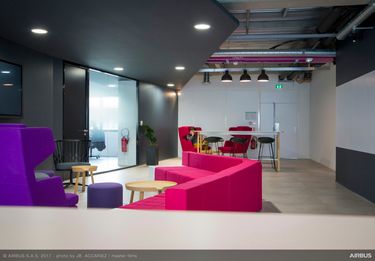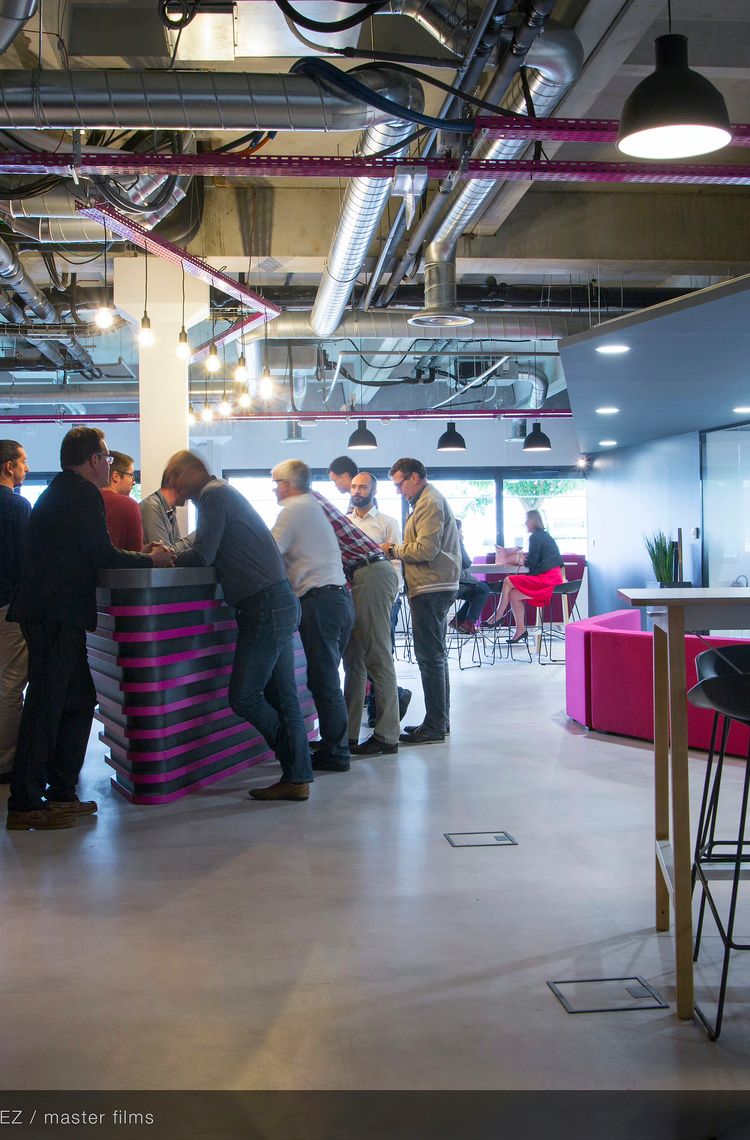Le Garage, Airbus’s brand-new research and technology (R&T) innovation hub, is now open for innovation.
Our state-of-the-art building in Toulouse, France will house around 130 staff, including top experts on areas such as data science, applied mathematics and electro-magnetics. There is also room for approximately 40 visitors from suppliers, universities, partners and BizLab startups as we continue our drive to cut the time it takes to get new products to market.
“There has been a general evolution as to what is considered a state-of-the-art collaborative workspace that promotes the kind of values modern tech companies such as ours embrace, notably collaboration, openness and speed,” says Airbus’ Chief Technology Officer (CTO) Paul Eremenko.
Vive la difference
The name is a nod to the Silicon Valley legend that states that a number of the greatest inventions — Apple and Hewlett Packard to name just two — were born in someone’s garage. However, the organisational set-up behind it differs somewhat from the typical Silicon Valley garage.
Instead, we want our R&T division to remain part of the main company, so that it can directly influence our processes, products and services.
With 140,000 employees and facilities all over the world, adopting a start-up mindset is not without challenges.
As Pierre Farjournel, CTO Chief of Staff, says, “We have to actively combat the ‘not invented here’ attitude. We want to collaborate with start-ups, universities, labs — the wider world.”
Designed for collaboration

With four separate areas, Le Garage has been developed to encourage new work practices. It has a set of offices for permanent staff but also spaces for different sized project teams and an area filled with the latest digital technology dedicated to computer-aided design. This Concurrent Design Facility allows teams of experts from across several disciplines to work on design studies using concurrent engineering methodology for complex engineering systems. The result: they work faster and more effectively, ensuring consistent and high-quality results in short timeframes.
Staying connected
The building is located next to the main manufacturing operation. Significant, Farjournel says, as it has to be connected with the daily business of the industrial world. “If you disconnect the research from the industrial environment, it doesn’t result in anything that you want for the future of the business.”
That sense of connection is supported by regular invitations to engineering heads to view the work in progress and attend workshops for particular projects, which also include suppliers such as Rolls Royce and Siemens.
